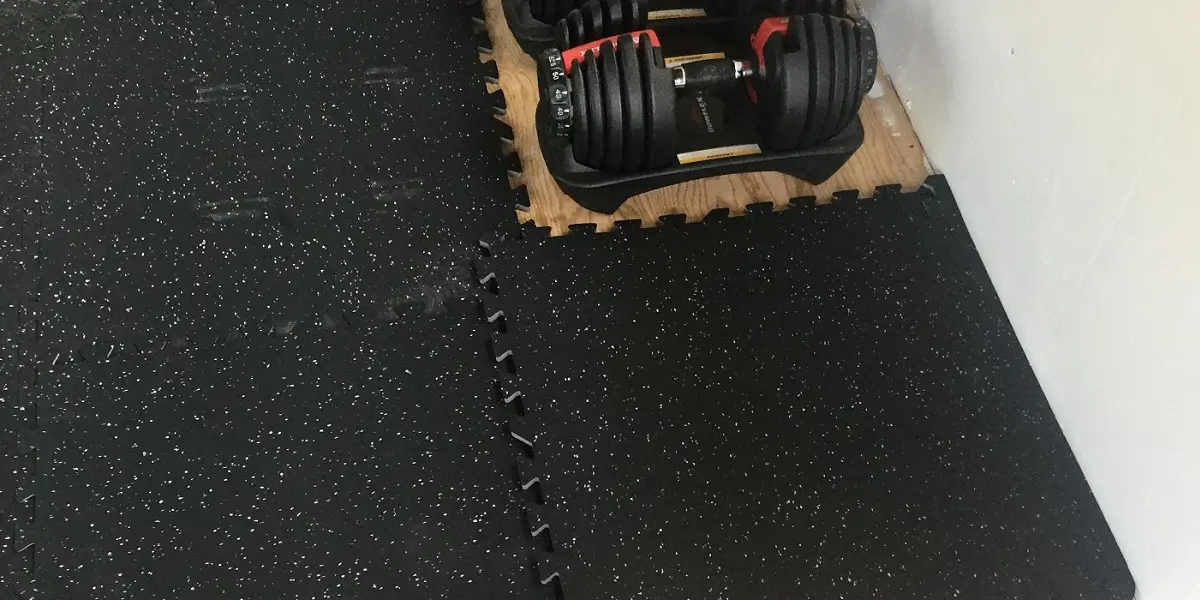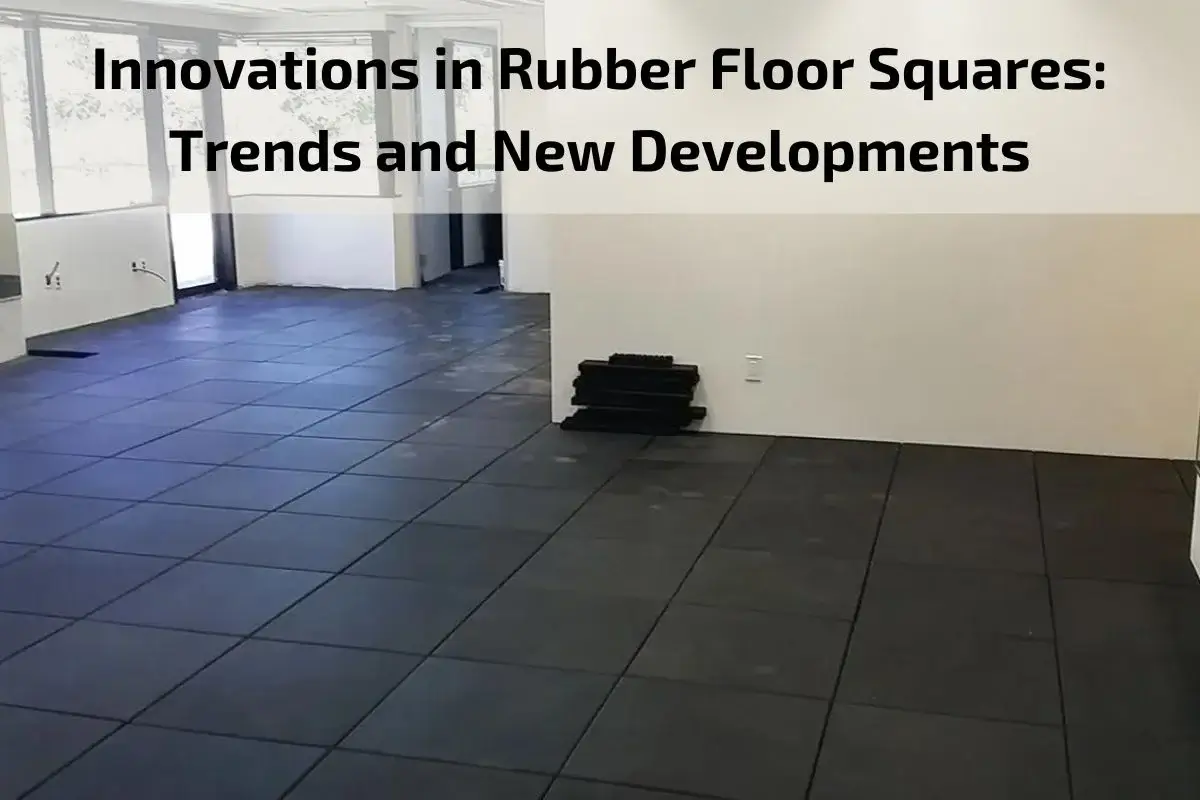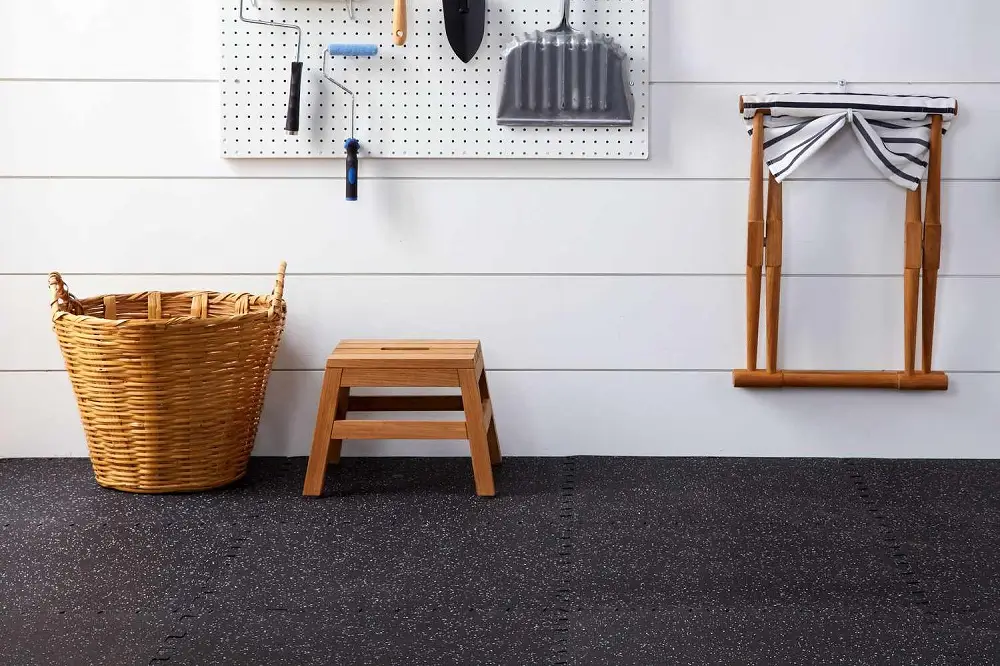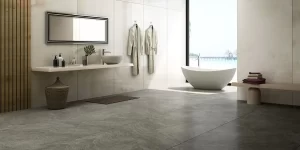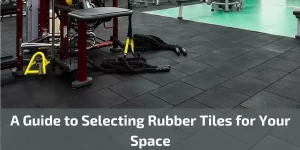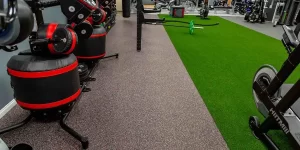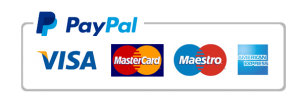Rubber floor squares have come a long way from being merely utilitarian flooring options to becoming innovative solutions that merge functionality with style. In recent years, advancements in technology and design have sparked a wave of innovation in the rubber flooring industry, leading to the development of new trends and exciting developments.
In this article, we delve into the world of rubber floor squares and explore the latest innovations that are shaping the future of flooring design. From enhanced durability to customizable designs, manufacturers are continually pushing the boundaries to meet the evolving needs and preferences of consumers across various sectors.
Join us as we uncover the latest trends and new developments in rubber floor squares, and discover how these innovations are revolutionizing the way we think about flooring solutions. Whether you’re a homeowner, architect, designer, or facility manager, understanding the latest trends in rubber floor squares can inspire creativity and inform decision-making in your next flooring project.
Importance of Rubber Floor Squares in Interior Design
Rubber floor squares play a crucial role in interior design, offering a myriad of benefits that contribute to the overall aesthetics, functionality, and sustainability of indoor spaces. Here’s why rubber floor squares are important in interior design:
- Versatility in Design: Rubber floor squares come in a wide range of colors, patterns, and textures, providing designers with endless possibilities to create unique and visually appealing interiors. Whether it’s a sleek and modern office space or a cozy residential setting, rubber floor squares can be customized to complement any design theme or style.
- Enhanced Durability: One of the key advantages of rubber floor squares is their exceptional durability and resilience. They are engineered to withstand heavy foot traffic, impact, and wear and tear, making them ideal for high-traffic areas such as hallways, entryways, and commercial spaces. Their durability ensures long-term performance and reduces the need for frequent replacements, making them a cost-effective flooring solution.
- Comfort and Safety: Rubber floor squares offer a comfortable and safe surface for occupants. Their cushioned texture provides excellent shock absorption, reducing fatigue and minimizing the risk of injuries from slips and falls. This makes rubber floor squares particularly suitable for spaces where safety is a priority, such as schools, healthcare facilities, and recreational areas.
- Sound Absorption: Rubber floor squares have excellent sound-absorbing properties, helping to reduce noise levels and create a quieter indoor environment. This is especially beneficial in open-plan offices, classrooms, and residential buildings where noise control is important for productivity and comfort.
- Easy Maintenance: Rubber floor squares are low-maintenance and easy to clean, requiring only regular sweeping and occasional mopping to keep them looking fresh and vibrant. Their non-porous surface resists stains, spills, and moisture, making them suitable for areas prone to spills or accidents.
- Sustainability: Many rubber floor squares are made from recycled rubber materials, making them an eco-friendly flooring option. By using recycled materials and promoting sustainability in interior design, rubber floor squares help reduce waste and conserve natural resources, contributing to a more environmentally conscious built environment.
- Adaptability to Various Applications: Rubber floor squares are suitable for a wide range of indoor applications, including residential, commercial, educational, and healthcare settings. They can be installed in offices, retail stores, gyms, classrooms, laboratories, and more, providing a versatile flooring solution that meets the diverse needs of different spaces
Definition and Composition of Rubber Floor Squares
Rubber floor squares are a type of flooring solution commonly used in both residential and commercial settings. They are composed of rubber materials that are manufactured and molded into square-shaped tiles, typically measuring anywhere from 12 inches by 12 inches to 24 inches by 24 inches, although various sizes are available to suit different applications.
The composition of rubber floor squares may vary depending on the manufacturer and specific product specifications. However, the primary components of rubber floor squares typically include:
- Natural Rubber: Rubber floor squares may contain natural rubber obtained from the sap of rubber trees (Hevea brasiliensis). Natural rubber provides elasticity, flexibility, and resilience to the flooring material, allowing it to withstand heavy foot traffic and impact without permanent deformation.
- Synthetic Rubber: In addition to natural rubber, rubber floor squares often contain synthetic rubber compounds such as styrene-butadiene rubber (SBR) or ethylene propylene diene monomer (EPDM). These synthetic rubber materials enhance the durability, strength, and weather resistance of the flooring tiles, making them suitable for both indoor and outdoor applications.
- Fillers and Additives: Fillers and additives may be incorporated into the rubber mixture to improve specific properties of the flooring tiles. Common fillers include carbon black, silica, and calcium carbonate, which help enhance the strength, abrasion resistance, and color stability of the rubber floor squares. Additives such as UV stabilizers, antioxidants, and flame retardants may also be included to enhance the performance and longevity of the flooring material.
- Pigments and Colorants: Rubber floor squares are available in a wide range of colors and patterns to suit various design preferences and aesthetic requirements. Pigments and colorants are added to the rubber mixture during the manufacturing process to achieve the desired color and appearance of the flooring tiles.
The manufacturing process of rubber floor squares typically involves mixing the rubber compounds, fillers, additives, and colorants together in precise proportions. The mixture is then heated, molded, and cured to form durable and resilient rubber tiles. The tiles may feature smooth, textured, or embossed surfaces, depending on the intended application and design preferences.
Benefits of Rubber Floor Squares
Rubber floor squares offer a multitude of advantages that make them a preferred choice for flooring solutions in both residential and commercial settings. Here are some key benefits of rubber floor squares:
- Durability: Rubber floor squares are renowned for their exceptional durability and resilience. They can withstand heavy foot traffic, impact, and wear and tear without permanent deformation or damage. This durability ensures long-term performance and reduces the need for frequent replacements, making them a cost-effective flooring option.
- Comfort and Cushioning: Rubber floor squares provide a comfortable and cushioned surface underfoot, making them ideal for spaces where prolonged standing or walking is common. The inherent elasticity of rubber absorbs impact and reduces fatigue, promoting comfort and well-being for occupants.
- Safety and Slip Resistance: Rubber floor squares offer excellent slip resistance, even when wet, thanks to their textured surfaces and natural traction properties. This helps prevent slips, trips, and falls, making rubber floor squares a safe flooring choice for areas prone to moisture or spills, such as kitchens, bathrooms, and entryways.
- Sound Absorption: Rubber floor squares have superior sound-absorbing properties, helping to reduce noise levels and minimize sound transmission between floors. This makes them particularly suitable for multi-story buildings, offices, classrooms, and residential settings where noise control is important for comfort and productivity.
- Easy Maintenance: Rubber floor squares are low-maintenance and easy to clean, requiring only regular sweeping and occasional mopping to keep them looking fresh and vibrant. Their non-porous surface resists stains, spills, and moisture, making them easy to maintain and ideal for busy households and commercial environments.
- Versatility in Design: Rubber floor squares come in a wide range of colors, patterns, and textures, allowing for endless design possibilities. Whether it’s a sleek and modern look or a rustic and textured finish, rubber floor squares can be customized to complement any design aesthetic and enhance the visual appeal of the space.
- Environmental Sustainability: Many rubber floor squares are made from recycled rubber materials, making them an eco-friendly flooring option. By using recycled materials and promoting sustainability in interior design, rubber floor squares help reduce waste and conserve natural resources, contributing to a more environmentally conscious built environment.
- Resistance to Chemicals and Moisture: Rubber floor squares are resistant to chemicals, oils, and moisture, making them suitable for a variety of indoor and outdoor applications. They are also resistant to mold, mildew, and bacterial growth, making them a hygienic flooring choice for healthcare facilities, gyms, and other high-moisture environments.
Different Types of Rubber Floor Squares
Rubber floor squares come in various types and configurations, each offering unique features and benefits to suit different applications and design preferences. Here are some common types of rubber floor squares:
- Recycled Rubber Floor Squares: These floor squares are made from recycled rubber materials, such as old tires and rubber scraps. Recycled rubber floor squares are eco-friendly and sustainable, offering a durable and resilient flooring option while reducing waste and conserving natural resources.
- Virgin Rubber Floor Squares: Virgin rubber floor squares are manufactured using new rubber materials without any recycled content. They offer superior durability, strength, and resilience compared to recycled rubber squares, making them ideal for high-traffic areas and demanding environments.
- Interlocking Rubber Floor Squares: Interlocking rubber floor squares feature a unique design that allows them to be easily interconnected without the need for adhesive bonding. This modular system provides flexibility in installation and allows for quick and easy replacement of damaged tiles. Interlocking rubber floor squares are commonly used in temporary or portable flooring applications.
- Seamless Rubber Floor Squares: Seamless rubber floor squares are manufactured in large sheets or rolls without any visible seams or joints. This seamless design creates a smooth and uniform surface, ideal for spaces where hygiene and cleanliness are paramount, such as healthcare facilities, laboratories, and clean rooms.
- Textured Rubber Floor Squares: Textured rubber floor squares feature embossed patterns or textured surfaces that enhance slip resistance and traction. These textured tiles are ideal for areas where safety is a concern, such as wet or slippery environments like bathrooms, kitchens, and pool decks.
- Colorful Rubber Floor Squares: Rubber floor squares are available in a wide range of colors, allowing for endless design possibilities and customization options. From vibrant primary colors to subtle earth tones, colorful rubber floor squares can add visual interest and personality to any space, from children’s play areas to corporate offices.
- Customizable Rubber Floor Squares: Some manufacturers offer customizable rubber floor squares that allow designers and homeowners to create unique patterns, logos, and motifs. Customizable options include laser-cut designs, inlaid graphics, and personalized color combinations, providing endless opportunities for creative expression and branding.
- Sound-Absorbing Rubber Floor Squares: Specialized rubber floor squares are designed with enhanced sound-absorbing properties to reduce noise levels and minimize sound transmission between floors. These sound-absorbing tiles are commonly used in commercial settings, offices, schools, and residential buildings where noise control is important for comfort and productivity.
Design Ideas and Trends for Rubber Floor Squares
Rubber floor squares offer endless design possibilities and trends that can transform any space into a stylish and functional environment. Here are some design ideas and trends for rubber floor squares:
- Geometric Patterns: Incorporating geometric patterns into rubber floor squares adds visual interest and depth to the space. From classic chevron and herringbone designs to contemporary hexagonal and diamond patterns, geometric layouts create dynamic and eye-catching floors that enhance the overall aesthetic appeal.
- Color Blocking: Color blocking involves using contrasting or complementary colors to create bold and vibrant floor designs. By strategically arranging rubber floor squares in different colors and hues, designers can define zones, highlight architectural features, and add personality to the space.
- Wood-look Rubber Tiles: Wood-look rubber tiles mimic the natural beauty of hardwood floors while offering the durability and resilience of rubber. These tiles feature realistic wood grain textures and finishes, providing warmth and elegance to interiors without the maintenance requirements of traditional wood flooring.
- Mixing and Matching: Mixing and matching different colors, textures, and sizes of rubber floor squares allows for endless customization and creativity. Designers can combine solid colors with textured tiles, create borders and accents, or play with contrasting patterns to achieve a unique and personalized look.
- Graphic Prints and Logos: Customizable rubber floor squares offer the opportunity to incorporate graphic prints, logos, and motifs directly into the flooring design. Whether it’s a corporate logo in a lobby, a school mascot in a gymnasium, or a playful pattern in a children’s play area, graphic prints add personality and branding to the space.
- Terrazzo-Inspired Designs: Terrazzo-inspired rubber floor squares feature speckled patterns and colorful aggregates embedded within the rubber material. These tiles evoke the timeless elegance of traditional terrazzo flooring while offering the durability and versatility of rubber, making them a popular choice for modern interiors.
- Gradient and Ombre Effects: Gradient and ombre effects create a sense of movement and fluidity in rubber floor designs. By blending colors from light to dark or vice versa, designers can create visually stunning transitions that add depth and dimension to the space.
- Metallic Finishes: Metallic finishes add a touch of glamour and sophistication to rubber floor squares. Metallic accents, such as gold, silver, and copper, can be incorporated into the rubber material or applied as surface coatings to create luxurious and contemporary flooring designs.
- Textured Surfaces: Textured rubber floor squares with embossed patterns or raised textures provide enhanced slip resistance and tactile interest. Textured surfaces add depth and dimension to the floor while improving safety and stability, making them ideal for high-traffic areas and wet environments.
- Eco-Friendly Designs: With increasing emphasis on sustainability, eco-friendly rubber floor squares made from recycled materials are gaining popularity. These environmentally conscious designs promote sustainability in interior design while offering the same durability, comfort, and style as conventional rubber flooring options.
Maintenance and Care Tips for Rubber Floor Squares
Proper maintenance and care are essential for preserving the appearance, functionality, and longevity of rubber floor squares. Here are some important tips to keep your rubber flooring looking its best:
- Regular Cleaning: Establish a routine cleaning schedule for your rubber floor squares to remove dirt, dust, and debris. Use a soft-bristle broom or vacuum cleaner with a brush attachment to sweep the surface regularly and prevent buildup.
- Mild Detergent Solution: For routine cleaning, use a mild detergent solution and warm water to mop the rubber floor squares. Avoid using harsh chemicals, abrasive cleaners, or ammonia-based products, as they can damage the surface of the flooring.
- Spot Cleaning: Promptly clean up spills and stains on the rubber floor squares to prevent them from setting and becoming difficult to remove. Use a soft cloth or sponge with mild detergent to spot clean the affected areas, and rinse thoroughly with clean water.
- Avoid Abrasive Tools: Avoid using abrasive cleaning tools such as steel wool pads or abrasive scrub brushes, as they can scratch or damage the surface of the rubber flooring. Use soft cloths, sponges, or non-abrasive scrubbing pads for gentle cleaning and maintenance.
- Preventative Measures: Place mats or rugs at entryways and high-traffic areas to trap dirt and moisture before it reaches the rubber floor squares. Use furniture pads or coasters to prevent scratching and indentation from heavy furniture or equipment.
- Avoid Standing Water: Prevent standing water from accumulating on the surface of the rubber floor squares, as it can seep into the seams and edges, causing damage and promoting mold and mildew growth. Wipe up spills and excess moisture immediately to maintain a dry and clean environment.
- Regular Inspection: Inspect the rubber floor squares periodically for signs of wear, damage, or deterioration. Repair or replace any damaged or worn areas promptly to prevent further damage and maintain the integrity of the flooring system.
- Avoid Harsh Chemicals: Avoid using harsh chemicals, solvents, or petroleum-based products on the rubber floor squares, as they can cause discoloration, deterioration, or damage to the material. Use cleaning products that are specifically formulated for rubber flooring and follow the manufacturer’s recommendations.
- UV Protection: If the rubber floor squares are installed in an outdoor area exposed to direct sunlight, consider applying a UV-resistant coating or sealant to protect the surface from UV radiation and fading.
- Professional Maintenance: Consider hiring professional cleaning and maintenance services periodically to deep clean and restore the appearance of the rubber floor squares. Professional cleaning methods and equipment can effectively remove embedded dirt, stains, and contaminants, extending the lifespan of the flooring.
Conclusion
In conclusion, rubber floor squares offer a versatile, durable, and stylish flooring solution for a variety of residential, commercial, and institutional spaces. With their wide range of design options, durability, comfort, and sustainability, rubber floor squares have become a popular choice among designers, architects, and homeowners alike.

